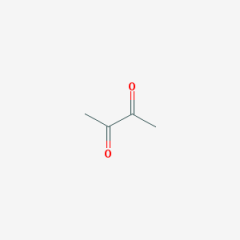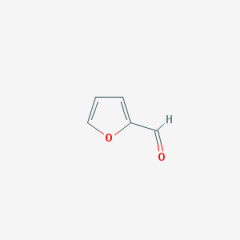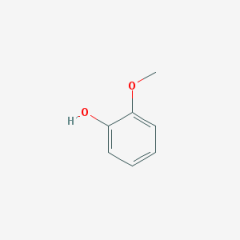Before we talk about what flavour wheel is and what it really means, let’s try to understand taste and flavour.
Taste is the one of the sensory mechanisms that has been created to test matter before consume.This phenomenon happens via gustatory cells (or taste buds otherwise) which have been located across the tongue and along the throat. Those taste buds have the ability to recognise the molecules or ions which are responsible to sweetness, sourness, saltiness, bitterness and savouriness (umami), individually.
Those responsible molecules and ions that generate tastes can be listed as below,
- Sweetness (sugar compounds)
- Sourness (H+)
- Saltiness (Na+)
- Bitterness (some proteins and alkaloids)
- Savouriness (Glutamate)
Therefore, we can understand that flavour recognition mechanism occurs within nose, tongue and brain. When olfactory epithelium being hit by volatile particles while taste buds are detecting H+, Na+, Sugars, some of the proteins and alkaloids, TASTE become FLAVOUR.
Coffee tasters flavour wheel has been made to evaluate a coffee in more productive and detailed manner. The two major categories, tastes and aroma together describe the “flavour” aspect of the wheel. Here we are to talk about rather aroma category in order to understand the structural view of the wheel.
36 of most common aromas have been identified by the way they produced and structured within the right side of the wheel under enzymatic, sugar browning and dry distillation sections.
Enzymatic
Enzymatic category holds the floral, fruity and herby characteristic of coffee. Coffee bean contains some percentage of phenolic compounds.Because of the resonance structure of the benzene ring of phenolic compound,there is higher electron density occur between oxygen and carbon atom. This higher electron density bias most of the phenolic compound towards oxidation, even by the oxygen of atmosphere. There chemical reactions usually are active around pH 5-7 within bean’s cells. Now, those chemical compounds that created by above reactions are more likely to have floral, fruity and herby aroma characteristic, therefore, those aromas have been categorised as enzymatic.
As an example we can see by above reaction of Polyphenol oxidise,complex brown polymers have been created via PPO (polyphenol oxidise). These reactions usually turn apples into brown once they connect with oxygen.
Therefore, any chemical compounds that can be produced through above reactions are more like to have floral, fruity and herby aromas.
Sugar Browning
Sugar browning category further divides in to Nut, Caramel and Chocolate types of characteristic of coffee. Caramelization and Maillrad reaction are the two different chemical reactions where those aromatic compounds are created.
Caramelization : This is a rather slow reaction when you compare it to reaction rate of Maillard reaction. What we should understand here is, that caramelization is a non enzymatic browning reaction and occurs by oxidation of sugars under higher temperatures (110 ‘C-116 ‘C)
Maltol , Furans, Diacetyl are few of the many compounds that created via caramelization, respectively responsible for malt, nutty and buttery flavours of the coffee
Maltol (Malt like) -126.11 molecular mass
Diacetyl (2,3-butanedione) (Butter like)86.01 molecular mass
Maillard Reaction : is one of the most fascinating reactions in chemistry. It was understood and published by French scientist Louis-Camille Maillard. Maillard reaction is a non enzymatic browning reaction which occurs under heat (140’C -165’C) by having sugars, amino acids compounds as reactive.
One of the most important things that we should understand here is that sucrose will not be a reactive in this chemical reaction but any sugar that has an aldehyde arm.
There are three main most important stages in Maillard reaction. First stage reaction is the formation amadori/Heyns compounds.In the second stage amadori/Heyns compounds decompose to most important heterocyclic chemical compounds that responsible for number of wonderful coffee aromas.
Some of the heterocyclic chemical compounds: pyrroles, furans, pyrazines…
Furan (caramel aroma) – molecular mass 68.07
Furfural- (nutty/roasted aroma) –molecular mass- 96.08
Sotolone, 4,5-Dimethyl-3-hydroxy-2,5-dihydrofuran-2-one (Maple syrup),molecular mass 128.12
The third stage of the reaction is the production of melanoidins. Chemical mechanism of this production is still unclear. Melanoidin is a brown pigment which has higher molecular mass as well as an undefined structure.
If we look at melanoidin and coffee chemistry together we can probably say, that coffee is brown because of the production of melanoidin.
Therefore, any chemical compounds that can be produced through above reactions are more like to have Nut, Caramel and Chocolate aromas
Dry Distillation
Dry Distillation category holds the resinous,spicy and carbony, characteristic of coffee. Coffee seed contains abundance of fibres within its cells. As coffee roasting is a very intense process, immense heat can burn the fibrous materials of the seed.
Therefore, any chemical compounds that can be produced through above reactions are more like to have resinous,spicy and carbony aromas.
2-Methoxyphenol- Guaicol- (smoky)-molecular mass 124.1
Therefore depending on the chemical composition of the seed, oxygen and roasting temperatures together can create wonderful flavour experience to our coffee with surprisingly unexplained melanoidins structures.
Finally, better understanding of the flavour wheel can open a new scientifically profound aspect to our coffee sensory experience. Rather than just having it sticked to our sensory lab wall.
(Special thanks to http://pubchem.ncbi.nlm.nih.gov/ & http://www.foodnetworksolution.com/wiki/word/0679/enzymatic-browning-reaction for pictures of the molecular structures and http://www.scaa.org/ for the picture of flavour wheel. )









Hi Dinuka, you will like reading this article Coffee Roasting: Under the Microscope the science of browning reactions http://wp.me/p4sCTb-P9
LikeLiked by 1 person
Cheers, Victor.
LikeLike
For your reference http://www.compoundchem.com/2015/02/17/coffee-aroma/
LikeLike
great thx !
LikeLike